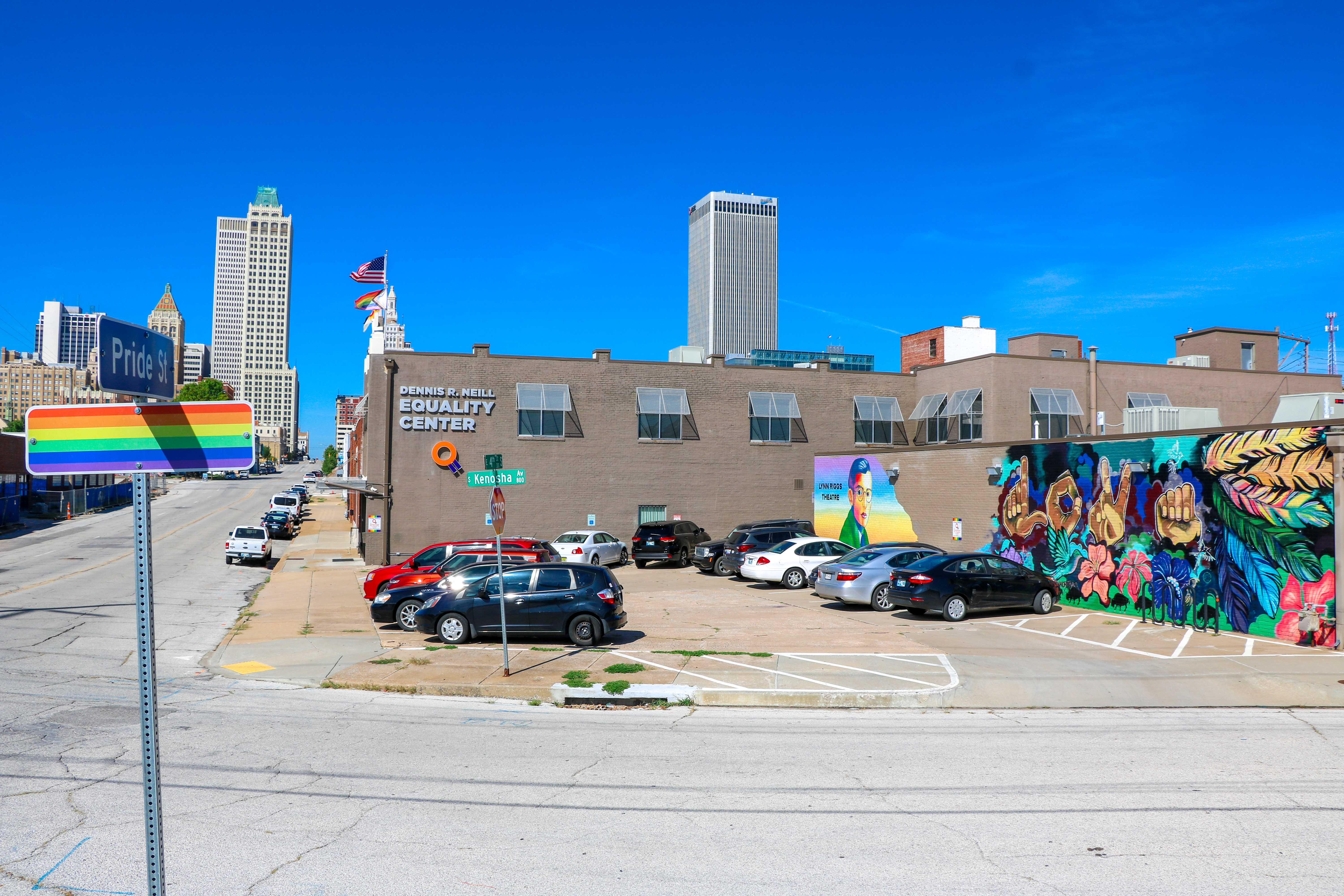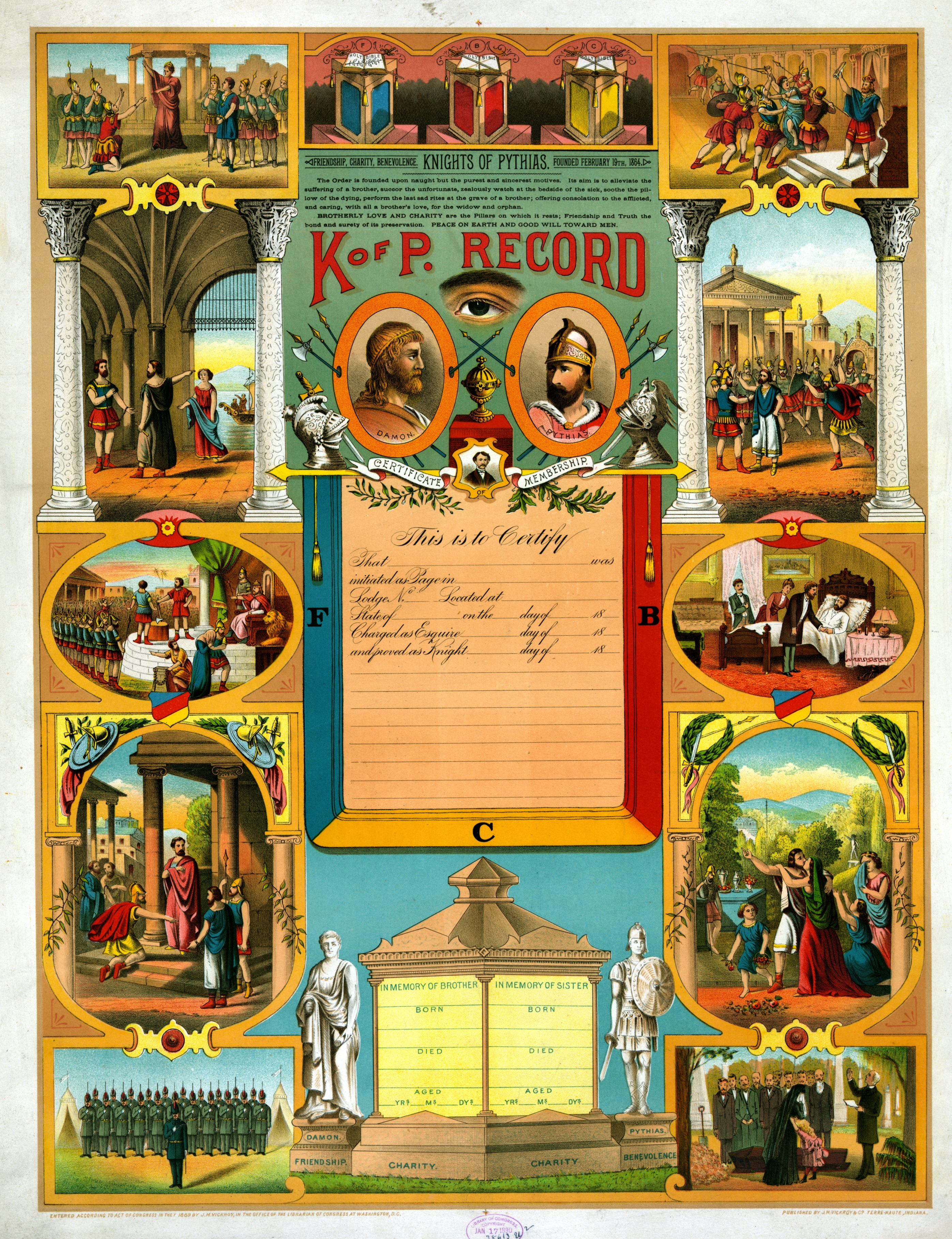|
Pythian Building
The Gillette-Tyrrell Building is a building in downtown Tulsa, Oklahoma. It was begun in 1929 by two Tulsa oilmen, J. M. Gillette and H. C. Tyrrell. They initially planned to construct a three-story office building at 432 S. Boulder Avenue, topped by a ten-story hotel, but these plans were canceled during the Great Depression and they stopped construction at the third floor. In 1931, they sold it to the Knights of Pythias, who decided to complete it as an office building and renamed it the Pythian Building. The building was added to the National Register of Historic Places (NRHP) on January 21, 1982 (NRIS #82003703). The application lists its architecture as a mix of the Art Deco styles: Modern and Zig Zag."Gillette-Tyrell Building." Landmark Hunter. Undated. Accessed September 3, 2018. [...More Info...] [...Related Items...] OR: [Wikipedia] [Google] [Baidu] |
Downtown Tulsa
Downtown Tulsa is an area of approximately surrounded by an inner-dispersal loop created by Interstate 244, US 64, and US 75. The area serves as Tulsa's financial and business district, and is the focus of a large initiative to draw tourism, which includes plans to capitalize on the area's historic architecture. Much of Tulsa's convention space is located in downtown, such as the Tulsa Performing Arts Center and the Tulsa Convention Center, and the BOK Center. Prominent downtown sub-districts include the Blue Dome District, the Tulsa Arts District, and the Greenwood Historical District, which includes the site of ONEOK Field, a baseball stadium for the Tulsa Drillers opened in 2010. In 2010, the estimated population of downtown is 4,000. The daytime population is estimated to be 36,000. Downtown districts Tulsa includes many structures built during the Oil Boom in the 1920s and 1930s, including Art Deco buildings such as the Mid-Continent Tower, Boston Avenue Methodist Church, ... [...More Info...] [...Related Items...] OR: [Wikipedia] [Google] [Baidu] |
Gillette Historic District
Gillette Historic District (GHD) is a residential area in the Midtown section of Tulsa, Oklahoma. It consists of the homes on Gillette Avenue and Yorktown Place, and is bounded by 15th Street on the north, the alley between Gillette Street and Lewis Avenue on the east, 17th Street on the south and the alley between Yorktown Place and Yorktown Avenue.Gillette Historic District "Gillette Historic District." Tulsa Preservation Commission. Retrieved November 9, 2014. It contains 31 single-family homes and 6 duplexes that were constructed between 1924 and 1941. The district (and Gillette Street) were named for James Max Gillette, a merchant, real estate entrepreneur and oilman who built his home in what is now the district in 1921. [...More Info...] [...Related Items...] OR: [Wikipedia] [Google] [Baidu] |
Great Depression
The Great Depression (19291939) was an economic shock that impacted most countries across the world. It was a period of economic depression that became evident after a major fall in stock prices in the United States. The economic contagion began around September and led to the Wall Street stock market crash of October 24 (Black Thursday). It was the longest, deepest, and most widespread depression of the 20th century. Between 1929 and 1932, worldwide gross domestic product (GDP) fell by an estimated 15%. By comparison, worldwide GDP fell by less than 1% from 2008 to 2009 during the Great Recession. Some economies started to recover by the mid-1930s. However, in many countries, the negative effects of the Great Depression lasted until the beginning of World War II. Devastating effects were seen in both rich and poor countries with falling personal income, prices, tax revenues, and profits. International trade fell by more than 50%, unemployment in the U.S. rose to 23% and ... [...More Info...] [...Related Items...] OR: [Wikipedia] [Google] [Baidu] |
Knights Of Pythias
The Knights of Pythias is a fraternal organization and secret society founded in Washington, D.C., on . The Knights of Pythias is the first fraternal organization to receive a charter under an act of the United States Congress. It was founded by Justus H. Rathbone, who had been inspired by a play by the Irish poet John Banim about the legend of Damon and Pythias. This legend illustrates the ideals of loyalty, honor, and friendship that are the center of the order. The order had over 2,000 lodges in the United States and around the world, with a total membership of over 50,000 in 2003. Some lodges meet in structures referred to as Pythian Castles. Organization The structure of the Knights of Pythias is three-tiered. The local units are called "Subordinate Lodges." State and provincial organizations are called "Grand Lodges" and the national structure is called the "Supreme Lodge" and meets in convention biennially. The officers of the Supreme Lodge include the sitting Past ... [...More Info...] [...Related Items...] OR: [Wikipedia] [Google] [Baidu] |
National Register Of Historic Places
The National Register of Historic Places (NRHP) is the United States federal government's official list of districts, sites, buildings, structures and objects deemed worthy of preservation for their historical significance or "great artistic value". A property listed in the National Register, or located within a National Register Historic District, may qualify for tax incentives derived from the total value of expenses incurred in preserving the property. The passage of the National Historic Preservation Act (NHPA) in 1966 established the National Register and the process for adding properties to it. Of the more than one and a half million properties on the National Register, 95,000 are listed individually. The remainder are contributing resources within historic districts. For most of its history, the National Register has been administered by the National Park Service (NPS), an agency within the U.S. Department of the Interior. Its goals are to help property owners and inte ... [...More Info...] [...Related Items...] OR: [Wikipedia] [Google] [Baidu] |
Oil Capital Historic District (Tulsa, Oklahoma)
The Oil Capital Historic District (OCHD) is an area in downtown Tulsa, Oklahoma that commemorates the success of the oil business in Tulsa during the early 20th century. During this period, Tulsa was widely known as "The Oil Capital of the World." The area is bounded by 3rd Street on the north and 7th Street on the south, Cincinnati Avenue on the east and Cheyenne Avenue on the west.National Register of Historic Places Registration Form for Oil Capital Historic District. Retrieved June 19, 2014. Early in the 20th Century, Oklahoma emerged as a major producer of oil and gas. Many of the companies that would become notable in the energy industry located either their home offices or major regional offices in Downtown Tulsa, often constructing arc ... [...More Info...] [...Related Items...] OR: [Wikipedia] [Google] [Baidu] |
Terra Cotta
Terracotta, terra cotta, or terra-cotta (; ; ), in its material sense as an earthenware substrate, is a clay-based unglazed or glazed ceramic where the fired body is porous. In applied art, craft, construction, and architecture, terracotta is the term normally used for sculpture made in earthenware and also for various practical uses, including vessels (notably flower pots), water and waste water pipes, roofing tiles, bricks, and surface embellishment in building construction. The term is also used to refer to the natural brownish orange color of most terracotta. In archaeology and art history, "terracotta" is often used to describe objects such as figurines not made on a potter's wheel. Vessels and other objects that are or might be made on a wheel from the same material are called earthenware pottery; the choice of term depends on the type of object rather than the material or firing technique. Unglazed pieces, and those made for building construction and industry, are ... [...More Info...] [...Related Items...] OR: [Wikipedia] [Google] [Baidu] |
Wainscot
Panelling (or paneling in the U.S.) is a millwork wall covering constructed from rigid or semi-rigid components. These are traditionally interlocking wood, but could be plastic or other materials. Panelling was developed in antiquity to make rooms in stone buildings more comfortable both by insulating the room from the stone, and reflecting radiant heat from wood fires, making heat more evenly distributed in the room. In more modern buildings, such panelling is often installed for decorative purposes. Panelling, such as wainscoting and boiserie in particular, may be extremely ornate and is particularly associated with 17th and 18th century interior design, Victorian architecture in Britain, and its international contemporaries. Wainscot panelling The term wainscot ( or ) originally applied to high quality riven oak boards. Wainscot oak came from large, slow-grown forest trees, and produced boards that were knot-free, low in tannin, light in weight, and easy to work wit ... [...More Info...] [...Related Items...] OR: [Wikipedia] [Google] [Baidu] |
Office Buildings Completed In 1931
An office is a space where an organization's employees perform administrative work in order to support and realize objects and goals of the organization. The word "office" may also denote a position within an organization with specific duties attached to it (see officer, office-holder, official); the latter is in fact an earlier usage, office as place originally referring to the location of one's duty. When used as an adjective, the term "office" may refer to business-related tasks. In law, a company or organization has offices in any place where it has an official presence, even if that presence consists of (for example) a storage silo rather than an establishment with desk-and-chair. An office is also an architectural and design phenomenon: ranging from a small office such as a bench in the corner of a small business of extremely small size (see small office/home office), through entire floors of buildings, up to and including massive buildings dedicated entirely to one c ... [...More Info...] [...Related Items...] OR: [Wikipedia] [Google] [Baidu] |
Buildings And Structures In Tulsa, Oklahoma
A building, or edifice, is an enclosed structure with a roof and walls standing more or less permanently in one place, such as a house or factory (although there's also portable buildings). Buildings come in a variety of sizes, shapes, and functions, and have been adapted throughout history for a wide number of factors, from building materials available, to weather conditions, land prices, ground conditions, specific uses, prestige, and aesthetic reasons. To better understand the term ''building'' compare the list of nonbuilding structures. Buildings serve several societal needs – primarily as shelter from weather, security, living space, privacy, to store belongings, and to comfortably live and work. A building as a shelter represents a physical division of the human habitat (a place of comfort and safety) and the ''outside'' (a place that at times may be harsh and harmful). Ever since the first cave paintings, buildings have also become objects or canvasses of much artistic ... [...More Info...] [...Related Items...] OR: [Wikipedia] [Google] [Baidu] |
Art Deco Architecture In Oklahoma
Art is a diverse range of human activity, and resulting product, that involves creative or imaginative talent expressive of technical proficiency, beauty, emotional power, or conceptual ideas. There is no generally agreed definition of what constitutes art, and its interpretation has varied greatly throughout history and across cultures. In the Western tradition, the three classical branches of visual art are painting, sculpture, and architecture. Theatre, dance, and other performing arts, as well as literature, music, film and other media such as interactive media, are included in a broader definition of the arts. Until the 17th century, ''art'' referred to any skill or mastery and was not differentiated from crafts or sciences. In modern usage after the 17th century, where aesthetic considerations are paramount, the fine arts are separated and distinguished from acquired skills in general, such as the decorative or applied arts. The nature of art and related concepts, ... [...More Info...] [...Related Items...] OR: [Wikipedia] [Google] [Baidu] |




.jpg)



